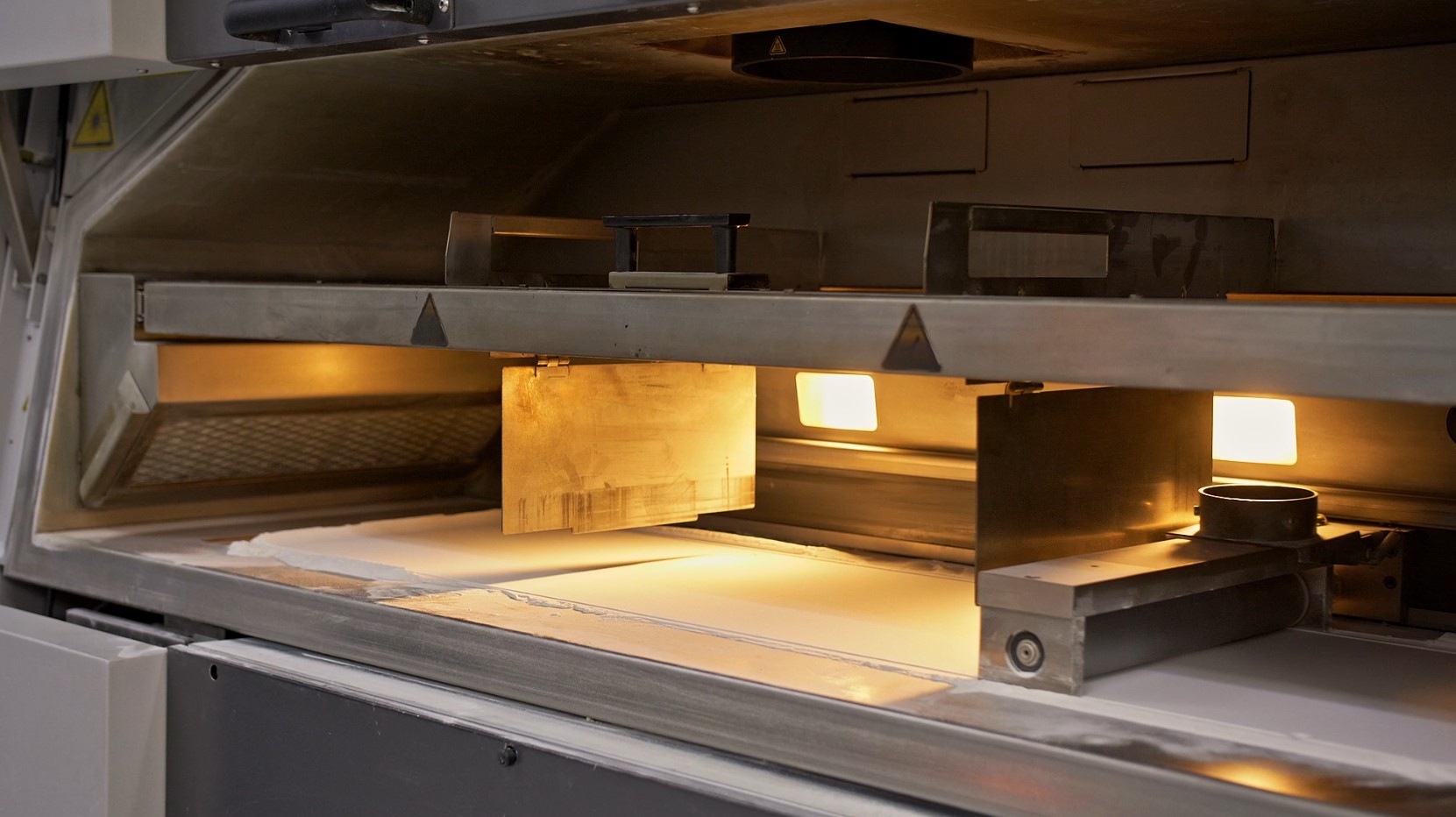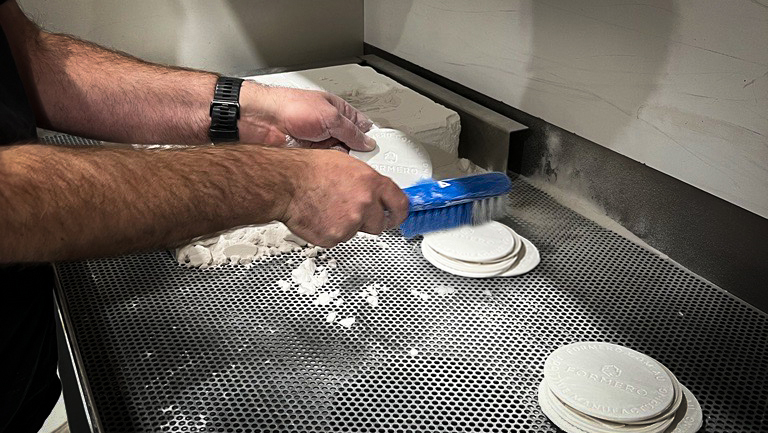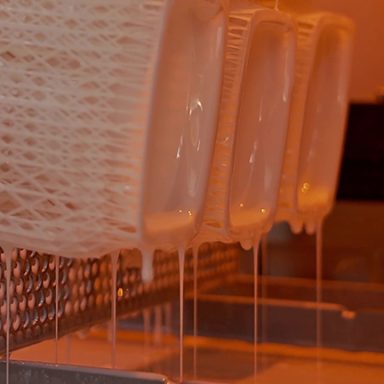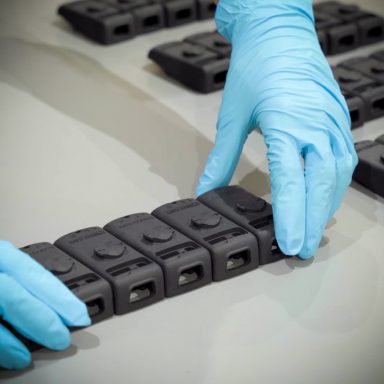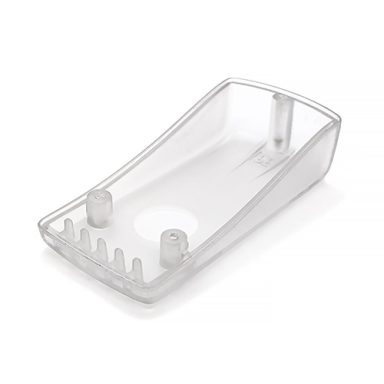How To Select The Right Material for SLS (Selective Laser Sintering)
September 25, 2023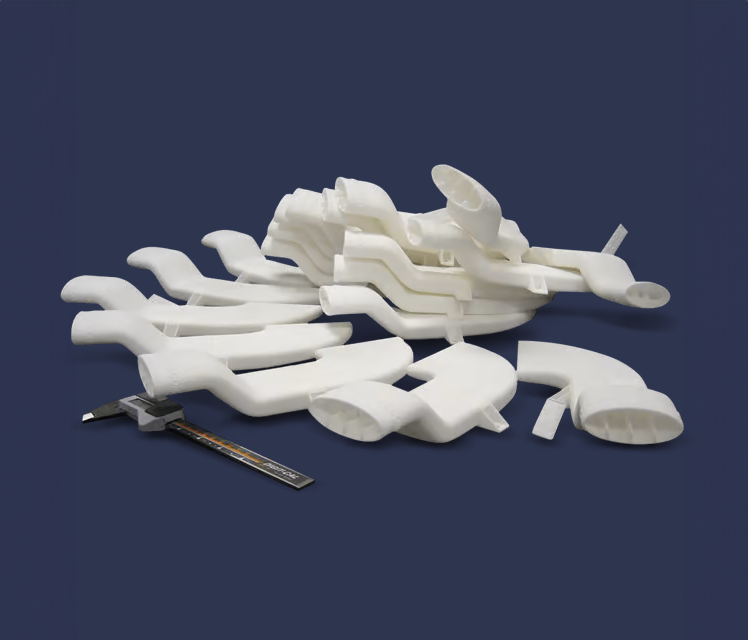
Selective laser sintering (SLS) is one of the most advanced 3D printing processes available today. It is used to create a wide range of prototypes that can withstand functional testing. However, depending on the specific use case of your SLS printed object, your material needs may change.
Choosing the right material for your SLS project can be difficult. In this post, we will discuss what Selective Laser Sintering entails and how to choose the best material for your project.
What Is Selective Laser Sintering?
Selective Laser Sintering (SLS) is a powerful additive manufacturing technology best known for its role in the realm of 3D Printing. At its core, the Selective Laser Sintering process involves the use of a high-powered laser to fuse small particles of powdered nylon into a solid, three-dimensional structure.
This technique stands out among other additive manufacturing technologies for its ability to produce complex geometries with high precision. The powdered nylon used in SLS offers excellent durability and flexibility, making it an ideal choice for various applications, from manufacturing end-use parts to creating intricate prototypes.
Materials We Offer for Selective Laser Sintering
At Formero, we offer several materials for your SLS projects. If you are considering building a project using Selective Laser Sintering, here are some of the materials we offer for this process:
1) Nylon 12 – DuraForm PA Plastic
DuraForm PA Plastic, also known as Nylon 12, is an excellent choice for selective laser sintering projects. This material is particularly renowned for its durability, ensuring your prototypes will maintain their shape even with functional testing.
Furthermore, Nylon 12 exhibits superior resistance to high temperatures, making it an ideal selection for projects that require components to withstand extreme heat.
By choosing DuraForm PA Plastic, your SLS projects will benefit from the material’s durability and resilience, providing you with a tooling-free, finished product that meets high-quality standards.
2) Copolymers – DuraForm® PAx Natural
The second type of material we offer for selective laser sintering is copolymers, specifically DuraForm® PAx Natural. This material is noted for its high impact strength and high elongation, mirroring the properties of injection-moulded nylon plastic.
As a result, it is capable of producing tough yet lightweight components that are suited to production-grade parts. An additional benefit of using DuraForm® PAx Natural is its high level of recyclability, making it an environmentally-conscious choice for your SLS projects.
The DuraForm® PAx Natural can also be used to create end-use parts in low-to-medium volumes, which is great if you’re on a smaller budget or have low-volume needs.
By selecting this material, you can rest assured of creating durable components that also have good mechanical properties.
3) Glass-filled Materials – DuraForm GF Plastic
The third type of material we offer for Selective Laser Sintering is the glass-filled DuraForm GF Plastic. This material is particularly suited to projects that require accurate and repeatable parts, making it an excellent choice for intricate designs.
DuraForm GF Plastic excels in load-bearing applications, especially at higher temperatures, ensuring the longevity and durability of the finished product, so if your prototype needs to withstand high temperatures, this could be the perfect material for you.
Additionally, this material is dimensionally stable, which further enhances the precision of the end product. This perspective of DuraForm GF Plastic makes it suitable for low to mid-volume rapid manufacturing, catering well to projects with limited production needs. If your project requires parts with added stiffness, the glass-filled DuraForm GF Plastic is an optimal solution. By incorporating this material into your SLS projects, you can achieve a balance of precision, durability, and stability with your produced components.
4) Fibre-reinforced Materials- DuraForm® HST Composite
Another material we provide for Selective Laser Sintering is DuraForm® HST Composite, a fibre-reinforced material renowned for its harmonious mix of stiffness, strength, and high-temperature resistance.
This material allows for the economical manufacturing of complex end-use parts in low-to-medium volumes, also providing a cost-effective solution for those operating under a budget. Notably, DuraForm® HST Composite is non-conductive and RF transparent, making it suitable for projects where these attributes are required.
It is an ideal choice for functional prototypes and end-use parts that necessitate high stiffness or elevated thermal resistance. By choosing DuraForm® HST Composite, your SLS projects will benefit from a material that marries stiffness and strength with thermal resistance and non-conductivity.
5) Nylon 11 – DuraForm® EX Plastic
DuraForm® EX Plastic, also known as Nylon 11 is another excellent choice for Selective Laser Sintering projects. This material can be used to manufacture tough, impact-resistant plastic prototypes or end-use parts. It displays characteristics akin to those of injection-moulded ABS and polypropylene, making it a robust choice for your SLS projects.
Its superior impact resistance ensures that functional prototypes can withstand “real-life” environment testing, thereby guaranteeing durability and reliability. Moreover, DuraForm® EX Plastic is a prime material for manufacturing complex end-use parts necessitating moulded-part performance while enduring harsh environments.
This material is particularly beneficial for low and medium-volume production, providing an economical solution for manufacturing robust, impact-resistant prototypes or end-use parts. If you need a material that can withstand harsh environments and promises durability, impact resistance, and cost efficiency, then DuraForm® EX Plastic is the material for you.
6) Flame Retardant – PA 2210 FR
PA 2210 FR is a flame-retardant material notable for its practical use in high-risk applications. This material is a type of white polyamide 12 powder fortified with a halogen-free chemical flame retardant, which makes it particularly safe for use even in hazardous environments.
Notably, it meets the fire protection class UL 94 / V-0, a significant requirement primarily for the production of electronic components and applications in the aerospace and automotive sectors. This compliance illustrates PA 2210 FR’s versatility, making it an appropriate choice for SLS projects involving highly regulated industries or those demanding high fire resistance.
The fact that PA 2210 FR is free of halogens further underlines its safety and environmental compliance. If your SLS projects require a material that offers high fire resistance without compromising safety or environmental standards, PA 2210 FR could be a reliable, effective choice.
How To Select The Right Material for SLS
Selective Laser Sintering is a powerful technology for producing functional parts and prototypes. To make the most of it, you need to ensure that you are selecting the right material for your projects.
Here are some factors to consider when selecting the right material for your SLS projects:
Mechanical Requirements
Depending on your project, you may need a material that offers stiffness, strength, toughness or impact resistance. Consider which of these qualities are necessary for the successful completion of your SLS projects and select a material accordingly.
- Tensile Strength: Tensile strength is the measure of how much pressure a material can withstand before breaking. If your project requires parts with a high tensile strength, you should look for materials such as PA 2210 FR (45 ±3 MPa) and DuraForm® HST Composite (48-51 MPa).
- Elongation at Break: Elongation at break is the measure of how much a material can stretch before breaking. If your project requires parts with high elongation at break, you should choose materials such as DuraForm® PAx Natural (282%) and DuraForm® EX Plastic (47%).
- Flexural Strength: Flexural strength is the measure of how much pressure a material can withstand before it deforms. If your project requires parts with high flexural strength, you should look for materials such as DuraForm® PA Plastic (48 MPa) and DuraForm® HST Composite (83-89 MPa).
- Impact Strength: Impact strength is the measure of how much impact a material can absorb before being damaged or shattered. For projects needing increased protection against shock, vibration or heavy use, consider using materials like DuraForm® EX Plastic (74 J/m (notched Izod)).
Environmental Requirements
Before selecting a material for your SLS project, you should consider the environment in which the parts will be used. This is especially important if the environment is potentially hazardous or involves extreme temperatures and pressures.
- High Temperatures (Duraform GF): If you need a material that is able to withstand high temperatures, choose DuraForm® GF Plastic. It can handle temperatures up to 180°C/356°F, making it ideal for projects involving prolonged exposure to heat sources.
- Flame Retardant (PA 2210 FR): If you need a flame-retardant material for your SLS projects, opt for PA 2210 FR. It meets the fire protection class UL 94 / V-0 and is free of halogens, making it suitable for highly regulated industries or those demanding high fire resistance.
- Non-conductive (Duraform HST): For projects needing non-conductivity, look for DuraForm® HST Composite. This material is non-conductive and RF transparent, making it suitable for projects where these attributes are required.
Aesthetic Requirements
Apart from performance requirements, you may also need to consider aesthetic requirements for your SLS projects.
- Layer Thickness / Detail / Accuracy: At Formero all of our SLS services can print with a layer thickness of 0.1mm. This layer thickness provides you with highly detailed and accurate parts.
- Build/part size: Different materials have different build/part sizes. When choosing the right material for your project, make sure to take into account the size of the part you are producing. When printing with Formero our DuraForm® PA 12 has a build size of 500x500x475 mm. All of our other SLS materials have a build size of 381x330x457 mm. You may also decide to print large objects in sections and glue them together. However, this depends on whether this would be suitable for your aesthetic and strength considerations.
- Colour: All SLS parts are printed in white, besides DuraForm® EX Plastic which can be printed in either black or white. Parts that are printed in white can naturally be dyed in a wide variety of colours for aesthetic purposes. Alternatively, Formero offers a painting service and can paint your paints in any pantone matching colour.
No matter what your requirements are, it is important to select the right material for your SLS projects. By considering these factors carefully, you can ensure that you get optimal results from your Selective Laser Sintering projects.
How Formero Can Assist You
Formero stands as a reliable partner to guide you through the process of Selective Laser Sintering (SLS) and beyond. We specialise in SLS 3D printing, leveraging sophisticated technology to help you transform your designs into reality.
Furthermore, our expertise spans a wide array of both additive and traditional manufacturing technologies. Not confined to just SLS, we also excel in Multi Jet Fusion (MJF) and Fused Deposition Modelling (FDM) processes.
For those seeking traditional manufacturing routes, we offer sound solutions in Injection Moulding and CNC Machining. Our proficiency in such diverse technologies means we can always offer the most suitable solution for your project, irrespective of complexity or scale.
Trust Formero to provide the expert guidance and solutions you need for your manufacturing projects.
Conclusion
When selecting the right material for your SLS project, it is important to consider the mechanical, environmental and aesthetic requirements of your project. With a wide range of materials available, there are plenty of options for you to choose from, depending on your needs.
At Formero, we have the expertise and experience to help you select the most suitable material for your projects and provide reliable advice and solutions to further your success. Contact us today to explore the possibilities of 3D printing and traditional manufacturing with Formero.
